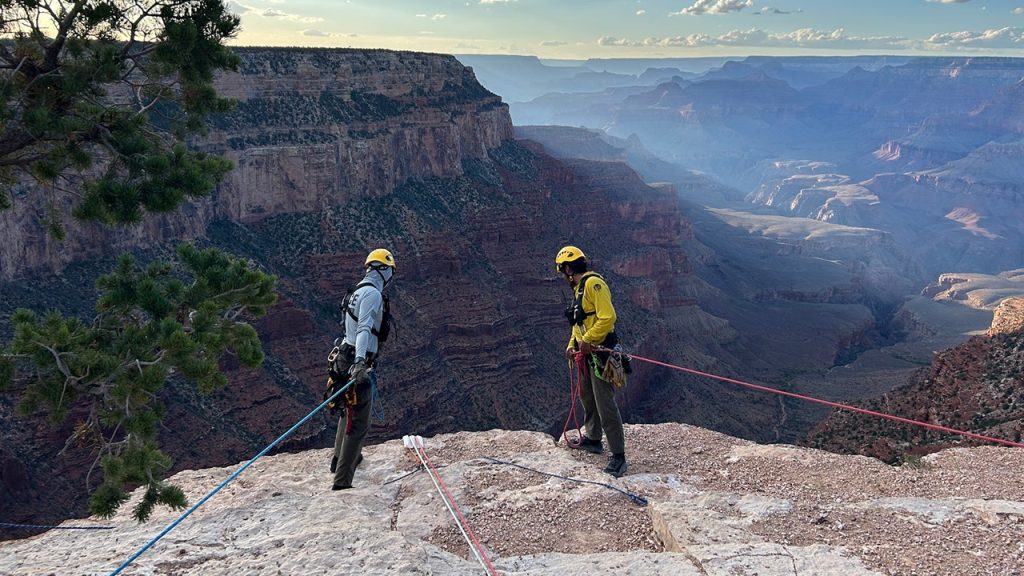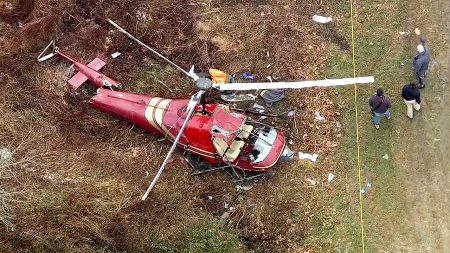Tragedy at the Grand Canyon: A Life Lost Over the Edge
In a heartbreaking incident at one of America’s most majestic natural wonders, 27-year-old Steven “Drew” Bradley of Federal Heights, Colorado, lost his life on Sunday when his vehicle plunged over the rim of the Grand Canyon. The tragedy occurred near the South Kaibab Trailhead, where park rangers responded to reports of a car going over the edge around 12:40 p.m. When emergency responders arrived at the scene, they discovered Bradley’s body approximately 300 feet below the rim, a stark reminder of the dangerous terrain that surrounds the iconic national park. The circumstances that led to this tragic accident remain unclear, as authorities have not released specific details about how Bradley’s vehicle went over the precipice.
The response to this emergency demonstrated the challenging rescue conditions that Grand Canyon National Park staff regularly face. After locating Bradley, a helicopter operation was necessary to recover his body and bring it to the rim. From there, he was transferred to the Coconino County Medical Examiner’s Office in Arizona for further examination. The National Park Service, in conjunction with the county medical examiner, has launched an investigation into the incident, though no additional information has been made available to the public at this time. The technical difficulty of such recovery operations highlights the remote and rugged nature of the Grand Canyon, where rescue teams must be prepared for complex extractions from difficult terrain.
While the National Park Service has not explicitly characterized the nature of this incident, their inclusion of mental health crisis resources in their announcement suggests potential concerns about the circumstances. The mention of the Suicide & Crisis Lifeline (988 or 1-800-273-TALK) serves as an important reminder of available resources for those experiencing mental health emergencies. This tragedy occurs against the backdrop of increasing awareness about mental health challenges and the importance of reaching out for help during times of crisis. The Grand Canyon, with its vast expanse and dramatic drops, has unfortunately been the site of both accidents and intentional self-harm over the years.
The Grand Canyon, while breathtakingly beautiful, presents inherent dangers to visitors, particularly in areas near the rim where the boundary between safety and peril can be deceptively thin. Each year, the park sees millions of visitors who come to marvel at its spectacular vistas, but this popularity comes with risks. The National Park Service continuously works to improve safety measures and visitor education about the potential dangers, particularly regarding keeping a safe distance from edges and being aware of unstable surfaces. Despite these efforts, accidents can still occur, often with devastating consequences due to the extreme geography of the canyon.
The loss of Steven “Drew” Bradley resonates beyond the statistics of park incidents, representing a young life cut tragically short. At just 27 years old, Bradley, like many visitors to the Grand Canyon, likely came to experience the awe-inspiring natural wonder that draws people from around the world. His hometown of Federal Heights, Colorado, a suburb north of Denver, sits in a state known for its own beautiful mountain landscapes. The connection between Colorado and Arizona through this tragedy highlights how national parks serve as destinations that bring together people from various backgrounds and regions, united in their appreciation for America’s natural heritage.
In the aftermath of this incident, the investigation will continue as authorities work to understand exactly what happened at the South Kaibab Trailhead that Sunday afternoon. Meanwhile, this loss serves as a somber reminder of the importance of safety in our national parks and the need for mental health awareness and support. The Grand Canyon will continue to stand as a testament to natural beauty and geological wonder, but also as a place where the boundary between life and death can be precariously thin. For those who knew Bradley, the canyon will now hold a different meaning—a place of remembrance for a life that, like the Colorado River that carved the canyon itself, has now followed its course to an end that came too soon.









